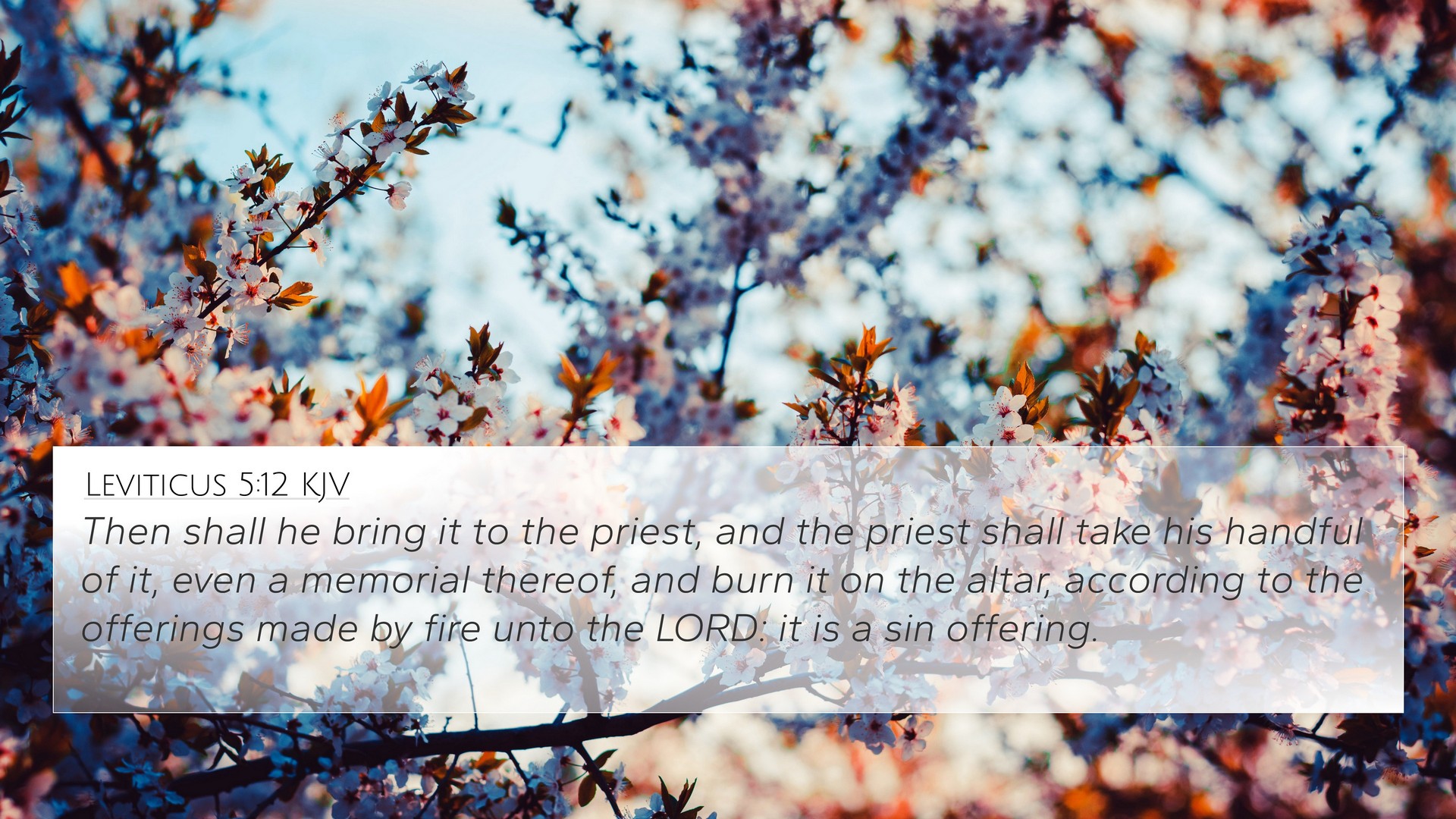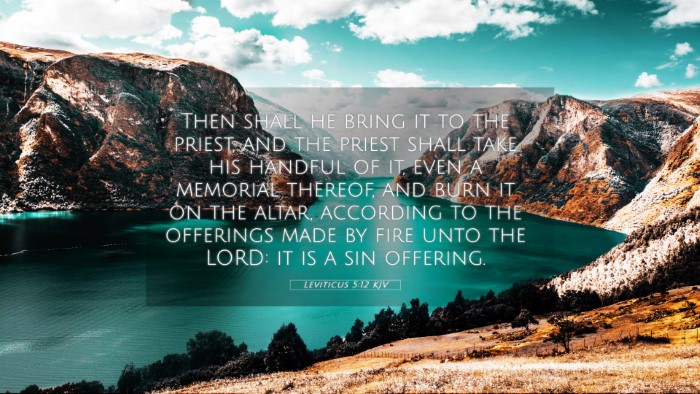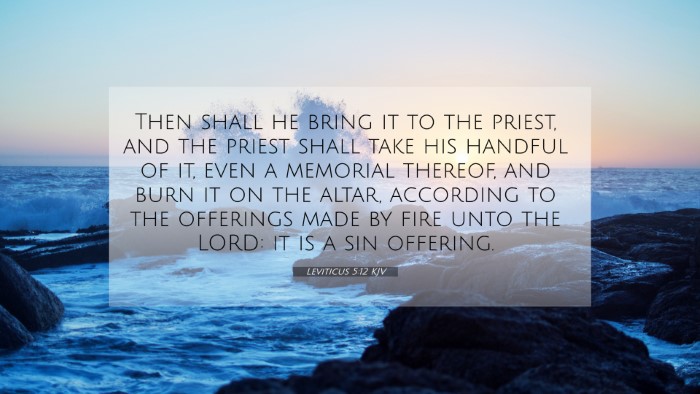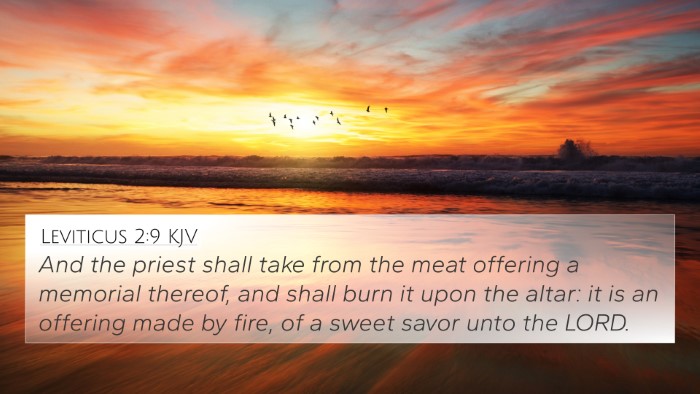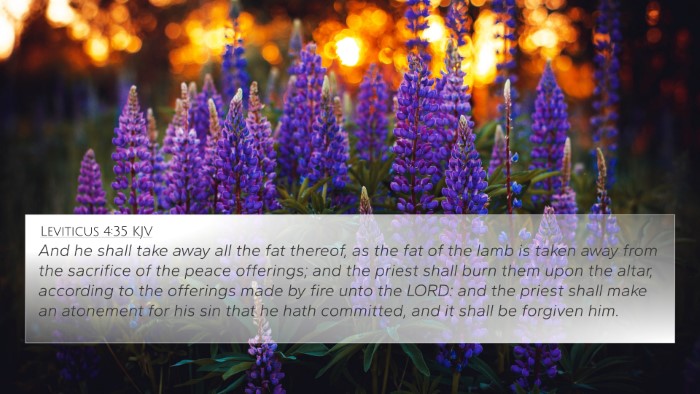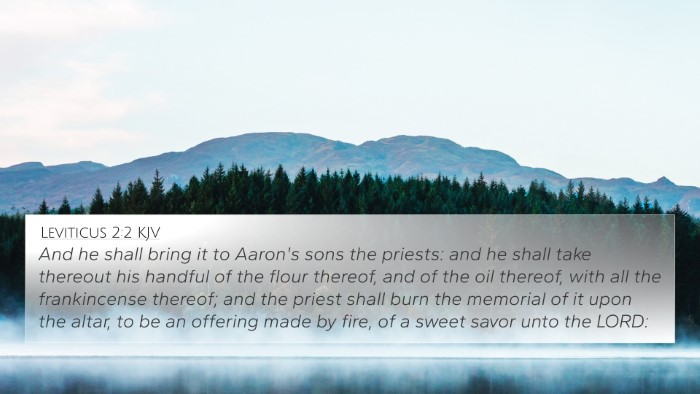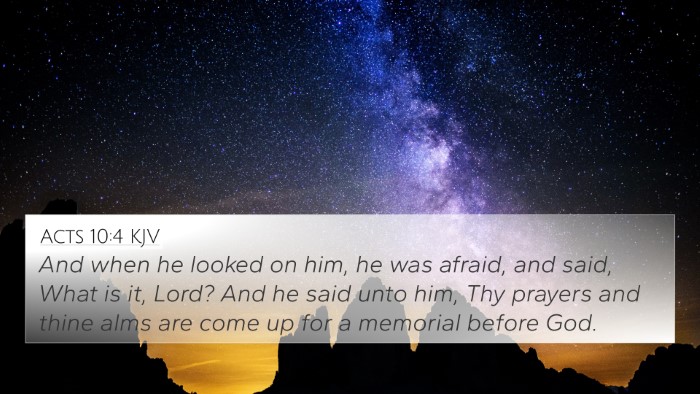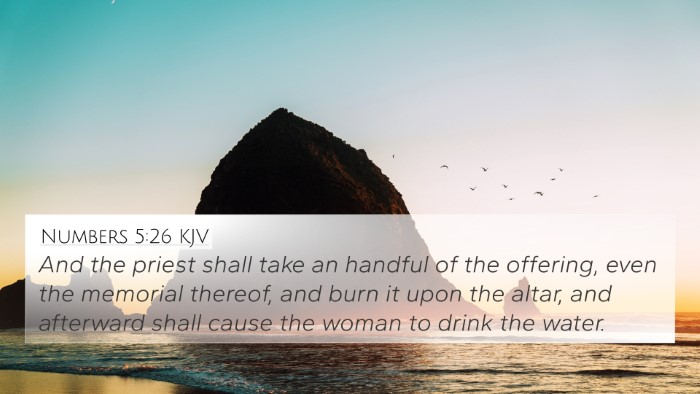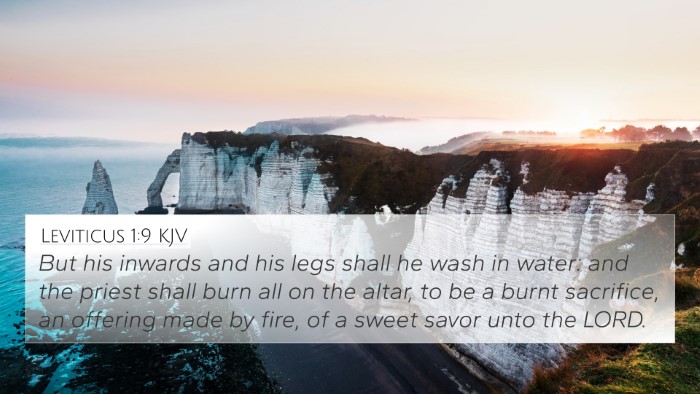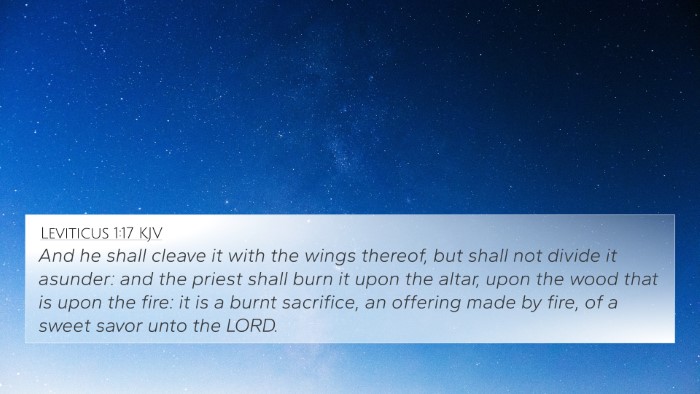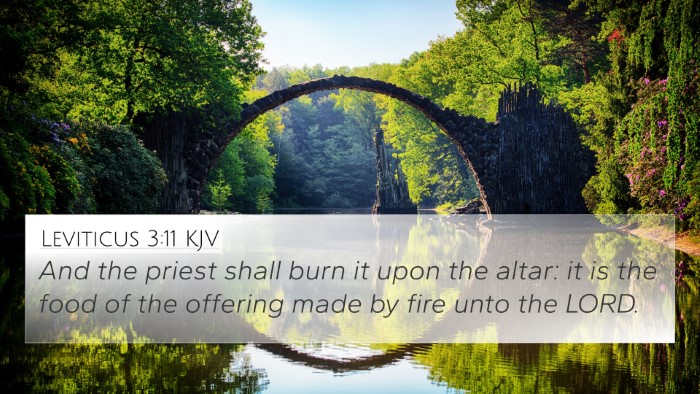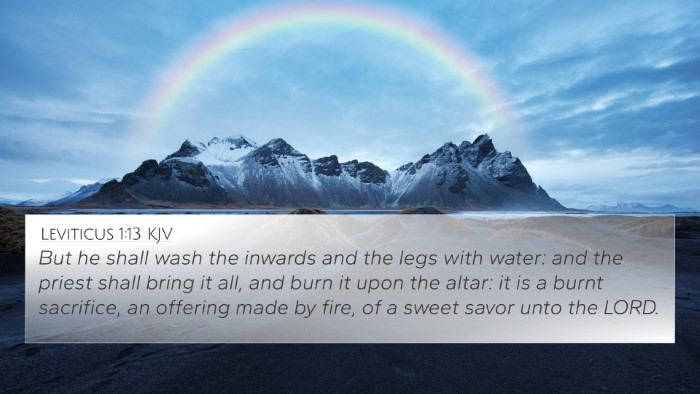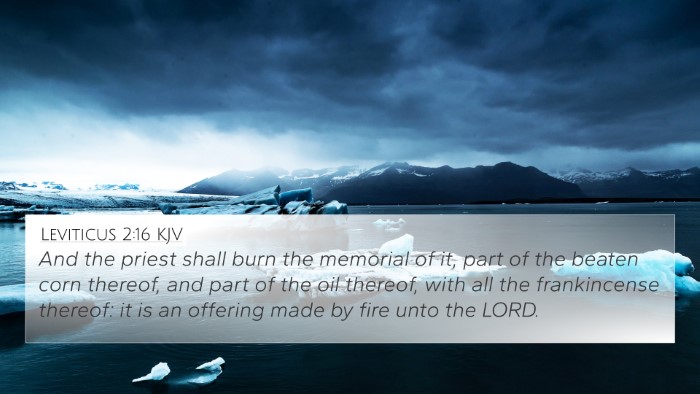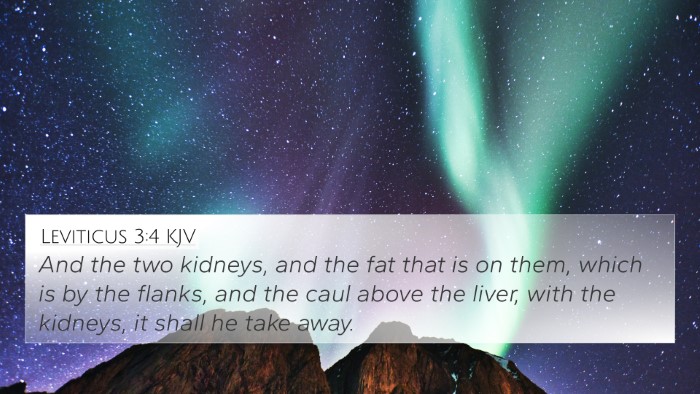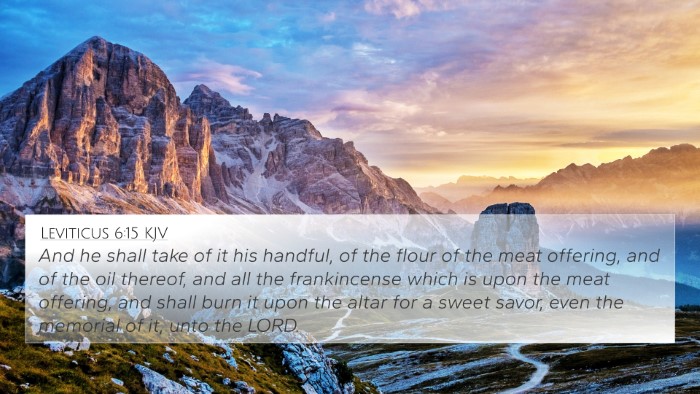Understanding Leviticus 5:12
Verse: Leviticus 5:12
Meaning and Interpretation: This verse finds itself within the body of laws concerning guilt offerings. The text states, “And he shall bring it to the priest, and the priest shall take a handful of it, as a memorial portion, and burn it on the altar according to the offerings made by fire to the Lord. It is a sin offering.” This illustrates the process of atonement and the necessity of the priest’s role in offering for the sins of the people. Understanding the specifics of this verse is vital in grasping the concept of sin, guilt, and the means of reconciliation with God.
Analysis and Insights from Commentaries
Matthew Henry's Commentary
Henry emphasizes the gravity of the sin offering, encouraging us to see that when individuals realize their guilt, they must take action. It's not enough to merely feel remorse. The act of bringing an offering signifies acknowledgment of one's guilt before God and the desire for restoration. It highlights the importance of a priest in mediating between God and the sinner.
Albert Barnes' Notes on the Bible
Barnes discusses the significance of the priest’s role and the attitude that an offering should symbolize. It’s about the heart’s condition in coming to God; true repentance involves an understanding that one's offenses are serious and deserve acknowledgment in a tangible form. The act of bringing an offering serves as both a recognition of one’s sins and a step towards healing.
Adam Clarke's Commentary
Clarke brings to light the cultural context of ancient Israel, wherein offerings served not just as a means of reconciliation but also reinforced community identity and religious observance. He explains how these sacrifices were vital for an individual’s standing before God, and by following God’s instructions, they maintained their covenant relationship.
Cross-References to Leviticus 5:12
- Exodus 30:10: The yearly atonement emphasizes the need for a sacrifice to cleanse the people.
- Leviticus 1:4: The process of presenting a burnt offering mirrors the sin offering, emphasizing the concept of atonement.
- Leviticus 6:25-30: Instructions on sin offerings affirm the necessity of proper procedures in making amends to God.
- Numbers 15:28: The priest’s role in facilitating forgiveness points to the importance of mediation in restoration.
- Hebrews 9:22: The New Testament realization that without the shedding of blood, there is no forgiveness of sins, relates to the purpose of the offerings outlined in Leviticus.
- Romans 8:3: Illustrates that what the law could not achieve due to human weakness, God did through Christ, reconnecting themes of sin and atonement.
- 1 John 2:2: Christ as the propitiation for our sins ties back into the sacrificial system's intention to promote reconciliation between God and man.
Applications in Thematic Bible Verse Connections
Connecting the Old and New Testaments: Leviticus 5:12 serves as an essential link in understanding the transition from Old Testament law and sacrificial systems to New Testament grace. The themes of acknowledgment of sin, mediation, and atonement resonate throughout scripture, leading to an ultimate fulfillment in Christ.
The sacrificial system serves as a foreshadowing of the ultimate sacrifice of Jesus, which provides a comprehensive view on the remedies for sin throughout the entirety of the Bible.
Bible Cross-Reference Tools
Utilize tools such as a Bible concordance or a Bible cross-reference guide to explore further connections within the text. Various methods for cross-referencing Bible study will also enhance understanding.
Conclusion
Leviticus 5:12 serves as a vital verse for comprehending the elements of sin, guilt, and reconciliation with God. The insights provided through various biblical commentaries offer depth and clarity, bridging connections that span both testaments. Engaging with the cross-references facilitates a richer understanding and appreciation of the scripture, while thematic studies illuminate the enduring relevance of these ancient texts.
